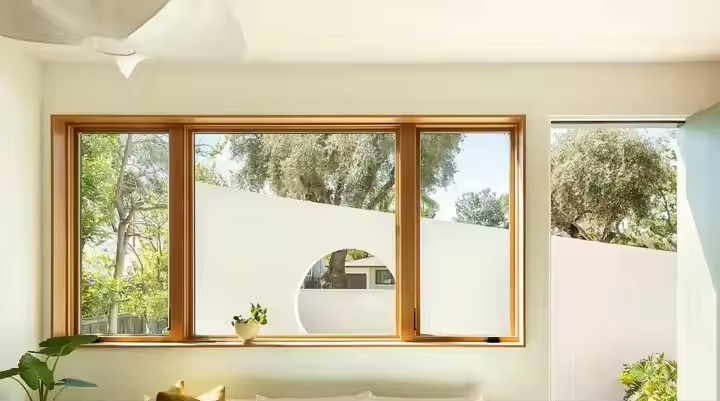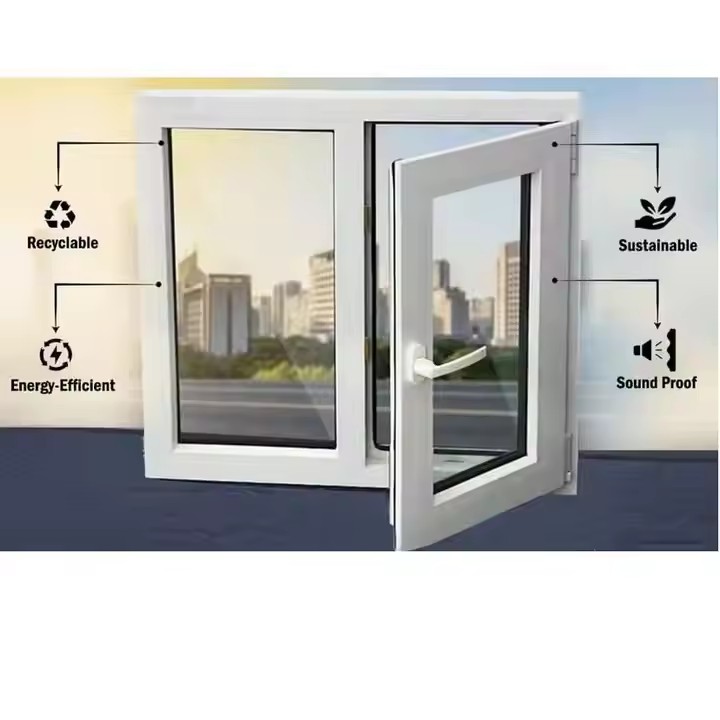I. Core Comparison of Mainstream Materials (Key to Selection)
Choosing materials for small villa sliding windows is essentially a balance between performance, aesthetics, and budget. Each of the four mainstream materials has distinct strengths and ideal scenarios—avoid following trends blindly.
- Thermal Break Aluminum (Top Recommendation)
Thermal break aluminum is the “universal choice” for small villas. By combining an aluminum alloy frame with PA66 insulation strips, it breaks thermal conduction while maintaining metal strength and durability. It suits over 90% of villa styles — including modern, minimalist, new Chinese, and light luxury designs.
Key Advantages:
Balanced performance: Excellent sound insulation (with double-glazed glass, it can reduce noise by 30–40 dB, ideal for villas near main roads). Its insulation is superior to standard aluminum, helping retain indoor warmth in winter.
Durability: Moisture-proof, corrosion-resistant, and deformation-resistant. Suitable for outdoor use for over 20 years with minimal maintenance (only regular track cleaning required).
Aesthetic versatility: Customizable frame colors (champagne gold, light gray, dark brown, etc.) and profile widths (60–110 series; 70–90 recommended for small villas for stability and beauty). Compatible with fluted or frosted glass to match interior styles.

Notes:
Avoid cheap, low-quality versions—some use recycled aluminum or poor insulation strips that compromise performance. Choose PA66 insulation strips (not PVC) and ensure a profile wall thickness ≥1.4 mm (meeting national standards).
Price range: mid-range quality typically costs ¥600–1200/m², suitable for families seeking long-term performance and aesthetics.
- uPVC (Best for Limited Budgets)
uPVC combines PVC plastic and steel reinforcement, offering high cost-effectiveness with decent insulation and noise reduction—ideal for budget-conscious or practical small villas (e.g., renovated or entry-level villas).
Key Advantages:
Affordable: Only ¥300–600/m², about half the cost of thermal break aluminum, making it suitable for large installations (like panoramic living room or balcony windows).
Excellent insulation and noise reduction: PVC has low thermal conductivity, and with double glazing, provides strong winter insulation and summer heat resistance—ideal for northern climates or noise-sensitive areas.
Notes:
Limited aesthetics: Usually available in white or light gray, with limited color or texture options—best suited for minimalist or Scandinavian interiors.
Moderate durability: Long-term sun exposure may cause aging, discoloration, or deformation (especially for outward-facing windows). Lifespan is typically 10–15 years. Choose reputable brands like Hailuo or Shide to avoid inferior quality.
- Aluminum-Wood Composite (Best for Style-Oriented Homes)
Aluminum-wood composite windows combine an aluminum exterior (for weather resistance and strength) with a solid wood interior (for texture and warmth). This high-end option fits small villas emphasizing wooden aesthetics—such as new Chinese, American, or French styles.
Key Advantages:
Stylish and refined: The interior wood layer retains natural grain and customizable finishes (e.g., walnut or light oak), harmonizing with wooden floors and furniture to create a warm, elegant atmosphere.

Comprehensive performance: The aluminum exterior shields from wind and rain, while the wood interior enhances insulation and acoustics—avoiding the warping issues of pure wood windows. Perfect for families pursuing aesthetic consistency.
Notes:
High price: Around ¥1500–3000/m², making it a premium choice suitable for focal rooms like bedrooms or studies.
Maintenance required: The wood interior needs yearly care (e.g., applying wood wax oil) to prevent mold or warping in humid environments. Not ideal for bathrooms or balconies.
- Solid Wood (For Classic or Vintage Styles)
Solid wood windows, made entirely from natural wood, exude warmth and nostalgia—best for vintage or country-style small villas (such as restored old houses or American country homes). They’re less common in modern daily-use villas.
Key Advantages:
Distinctive character: Natural wood grain and color perfectly complement traditional or rustic villas—creating a sense of authenticity and charm unmatched by other materials.
Notes:
Prone to deformation and cracking: Solid wood reacts to humidity and sunlight. Use treated woods (anti-corrosion, moisture-resistant, degreased) like teak or balau.
High maintenance and cost: Requires annual upkeep, priced around ¥2000/m² or higher, with low cost-effectiveness—suited only for homeowners with strong stylistic preferences.

